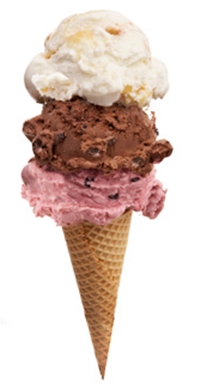There was a time before Photoshop (BP) when photographs were able to be used as evidence. Now, after Photoshop (AP), photography is one of the least truthful pastimes you can take up. For the pro photographer much time is used in working out how to either show the product in a favorable way, or to disguise some defect or other.
There is a veritable army of people out there who love to go through advertising brochures and look for minute imperfections and write to the manufacturer saying “Does all of your jewelry have scratches on them?” And who gets the blame? Not the manufacturer who sent over the product, but the poor old photographer, that’s who. This can really be an enormous problem especially when you may be photographing a pre-production item and this is the only one in captivity.

Have you ever tried photographing champagne at the wedding? There’s never enough bubbles to make it look sparkling. To get over this, drop some sugar into the glass. Only a few grains are enough to give the almost still glass of champers that “just opened” fizz look to it. For a catalogue shot you also have to bring the light in from the back of the glass, as well as from the front. This takes two flash heads, or at least one head and a reflector.
While still on wines, if you try and shoot a bottle of red wine, it comes out thick dark maroon or even black. Restaurateurs who have tried photographing their wines will agree. So what does the pro shooter do? Well he has a couple of courses of action. First is to dilute the red wine by about 50 percent and secondly place a silver foil reflector on the back of the bottle. So what happens to the half bottle of red that was removed to dilute the wine? The photographer has it with dinner.
I once was given the job to photograph 10 ice cream cones for a restaurant chain. They wanted all 10 of them standing up, all the different flavors and looking attractive. This was not a simple assignment, let me assure you.
First off, how do you get 10 ice cream cones to stand upright with no obvious support. The answer was wooden skewers through the back of the cone going into a block of polystyrene covered with black velvet material.
Next you have to check the lighting flash heads and focus, using polystyrene balls on top of the cones, as ice cream melts too quickly. After you get all that set up properly you have to be ready to scoop up the ice creams and place them on the cones without any drips. You need three people to do this as ice cream under studio lighting melts in under 30 seconds.
Having taken one shot, if you are lucky everything will be fine. The reality is that you will need to take the shot several times to get everything correct, all the cones exactly parallel to each other, and no drips on the black velvet. That one shot will take you one day, which is why food photography is so expensive.
This is one area where there are more fraudulent practices than any other. Cold food can be made to look hot by sprinkling chips of dry ice to give “steam” coming off the dish. Not palatable, but it looks OK. Cooking oil gets brushed on slices of the cold meat so that they look moist and succulent.
That is just for starters. In the commercial photography studio, the dedicated food photographer would erect a “light tent” of white polystyrene and bounce electronic flash inside. Brightness is necessary to stop the food looking grey and dull. Lighting is just so important. If you do not have bright sparkly light then potatoes will look grey, and even the china plates look drab and dirty.
In the USA, there are very firm rules about photographing food. You are not allowed to use substitute materials which “look” like food, but are actually not. This covers using shaving cream as the “cream” on top of cappuccino coffee for example. But don’t believe it!




